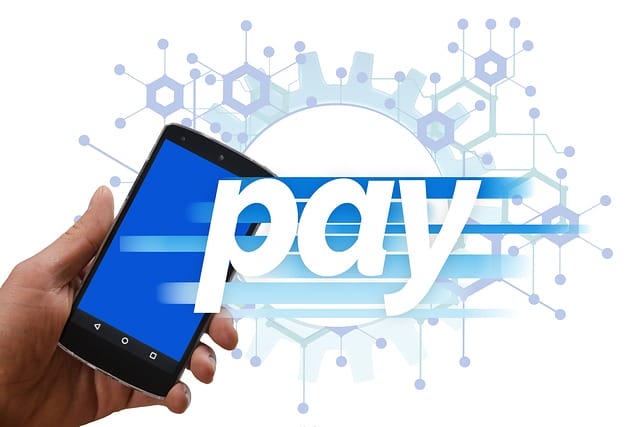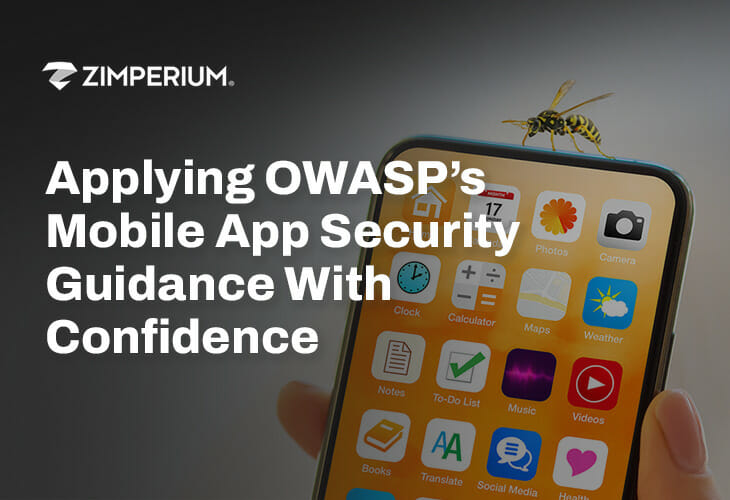
Cross-border payments are transactions where the payor and the recipient are based in different countries. These payments are pivotal in today’s globalized business world, encompassing various financial transfers across international borders. Understanding cross-border payments is crucial for developers building mobile applications for enterprises such as e-commerce companies or retail banks. These transactions involve multiple currencies, regulatory environments, and financial infrastructures, making their integration into mobile apps complex yet essential for global business operations.
Importance of Cross-Border Payments in Mobile App Development for Enterprises
- Expansion of Global Reach: Cross-border payments are fundamental for enterprises aiming to operate globally. Integrating this capability into a mobile app allows businesses to tap into international markets, broadening their customer base.
- Enhanced Customer Experience: Providing seamless cross-border payment options in mobile apps can significantly improve the user experience for customers in different countries, thereby boosting customer satisfaction and loyalty.
- Compliance with Regulations: Cross-border transactions are governed by many international laws and regulations. Mobile apps handling these payments must comply with these regulations to avoid legal repercussions and maintain trust.
- Currency Conversion and Handling: Dealing with multiple currencies is crucial to cross-border payments. Mobile apps must efficiently handle currency conversion, considering exchange rates and transaction fees.
- Security Concerns: Cross-border payments pose unique security challenges due to the involvement of multiple banking systems and regulations. Ensuring secure transactions is paramount to protect both the enterprise and its customers.
Technical Aspects of Cross-Border Payments in Mobile App Development
Developing a mobile application that efficiently handles cross-border payments involves complex technical and financial considerations. The key aspects include integration with payment gateways, user interface/experience design, backend processing, security protocols, and regulatory compliance.
Integration with Payment Gateways
Integration with robust payment gateways is the cornerstone of enabling cross-border transactions in a mobile app. These gateways act as intermediaries, facilitating secure transactions between the customer’s bank and the app. Key considerations include:
- Gateway Selection: Choose gateways that support a wide range of currencies and comply with international transaction standards. They should also offer competitive transaction fees and favorable currency conversion rates.
- API Integration: Payment gateways typically offer APIs for integration into mobile apps. These APIs must be integrated seamlessly to handle transaction requests, currency conversions, and responses.
- Fallback Mechanisms: Implementing multiple gateways or fallback options is critical to ensure transaction completion in case one gateway fails or is unavailable.
User Interface and User Experience (UI/UX)
The UI/UX design plays a pivotal role in how users interact with the payment features of the app. Key aspects include:
- Currency Selection and Display: The interface should allow users to select their preferred currency and see real-time conversion rates easily.
- Simplified Transaction Flows: Design a straightforward, intuitive payment process. Complex procedures can lead to user frustration and abandoned transactions.
- Localization: Localizing the app, including language and currency format, enhances the user experience for a global audience.
Backend Systems
The backend of a mobile app is where the core processing of cross-border payments occurs. This includes:
- Transaction Processing: The backend must efficiently process transactions, including currency conversions, fee calculations, and transaction recording.
- Database Management: Securely storing transaction data and user information while ensuring quick retrieval when required.
- Scalability: The system should handle varying loads, especially during peak transaction periods.
Security Protocols
Security is paramount in cross-border payments due to the sensitivity of financial data. Essential security measures include:
- Encryption: Implement SSL/TLS encryption to secure data transmission between the mobile app, backend servers, and payment gateways.
- Compliance Standards: Adhering to international standards such as PCI DSS (Payment Card Industry Data Security Standard) is critical.
- Authentication Mechanisms: Implement robust authentication methods, like two-factor authentication (2FA), to verify user identity.
Handling Regulatory Compliance
Cross-border payments are subject to a range of international regulations and laws, including:
- AML and KYC: Anti-Money Laundering (AML) and Know Your Customer (KYC) regulations are crucial. Integrating features that verify user identity and monitor transactions for unusual activity is necessary.
- Data Protection Laws: Maintain compliance with data protection regulations like GDPR (General Data Protection Regulation) in Europe and similar laws in other regions.
- Regular Audits and Updates: Conduct regular compliance audits and update the app per changes in international financial regulations.
Developing a mobile app that handles cross-border payments demands a meticulous approach, balancing technical efficiency with regulatory compliance. Integrating with payment gateways, a user-centric design, robust backend processing, stringent security measures, and adherence to international regulations form the backbone of a successful cross-border payment system in a mobile application. As global financial landscapes evolve, staying abreast of technological advancements and regulatory changes remains imperative for developers in this domain.
Best Practices in Mobile App Development for Cross-Border Payments
Developing a mobile application capable of handling cross-border payments is a complex task that involves various technical, security, and regulatory aspects. Adhering to best practices is crucial to ensure efficient, secure, and user-friendly payment experiences. Here are essential best practices to consider:
Selecting the Right Payment Service Providers (PSPs)
- Broad Currency Support: Choose PSPs that support a broad range of currencies and have a solid international presence. Extensive currency support ensures that users can transact in their preferred currency, improving user experience.
- Low Transaction Fees: Opt for PSPs offering competitive fees, as high transaction costs can deter users from completing purchases.
- Reputation and Reliability: Select PSPs with a proven track record of reliability and excellent customer support. Selecting PSPs with a good reputation and high reliability helps to ensure consistent service availability and quick resolution of payment issues.
Optimizing for Mobile Experience
- Responsive Design: Ensure the app’s design is responsive and adaptable to different screen sizes and orientations. A seamless experience across various devices is crucial for user satisfaction.
- Simplified Payment Flow: Design the payment process as simple and intuitive as possible. Avoid unnecessary steps or complex navigation that can lead to user frustration or abandoned carts.
- Clear Information Display: In the user’s local currency, display essential information such as exchange rates, fees, and total payment amount. Transparency is vital to building trust.
Security Measures
- Encryption: Implement robust encryption standards like SSL/TLS for data transmission. Encryption protects sensitive financial information from interception during transactions.
- Compliance with Standards: Adhere to international security standards like PCI DSS to ensure secure handling of credit card information.
- Regular Security Audits: Conduct security audits and penetration testing to identify and fix vulnerabilities.
Handling Regulatory Compliance
- AML and KYC Compliance: Integrate features that comply with Anti-Money Laundering and Know Your Customer regulations. Regulatory compliance includes user identity verification and monitoring transactions for suspicious activities.
- Data Privacy Laws: Ensure compliance with global data protection regulations like GDPR. This compliance involves obtaining user consent for data collection and ensuring data is handled securely.
- Regular Legal Updates: Stay updated on changes in international financial regulations and adapt the app accordingly to remain compliant.
Testing and Quality Assurance
- Comprehensive Testing: Conduct thorough testing, including functional, security, and performance tests, to ensure the app functions correctly under various scenarios.
- User Testing: Engage real users in testing to gather feedback on the app’s usability and payment process. This helps in identifying areas for improvement from a user’s perspective.
User Support and Education
- Effective Customer Support: Provide accessible and efficient customer support to address user queries and payment issues.
- Educational Content: Offer educational resources or tooltips within the app to help users understand various aspects of cross-border payments, such as currency conversion and transaction fees.
In summary, developing a mobile app for cross-border payments involves careful consideration of PSP selection, user experience optimization, stringent security measures, regulatory compliance, thorough testing, and efficient user support. By adhering to these best practices, developers can create a secure, efficient, and user-friendly payment experience essential for success in the global market.
Technical Comparison of Cross-Border Payments in Android vs. iOS Environments
Developing cross-border payment solutions in mobile applications involves distinct considerations for Android and iOS platforms. While the core principles of secure and efficient payment processing remain constant, the differences in development environments, programming languages, user interface guidelines, and market reach impact how these solutions are implemented.
Development Environment and Language
- Android: Android apps are primarily developed in Java or Kotlin. Kotlin, being a modern language, offers concise syntax and improved safety features, which can be advantageous in handling complex payment transactions and data security.
- iOS: iOS apps are developed using Swift or Objective-C. With its robust performance and safety features, Swift is well-suited for developing secure payment solutions. It also provides better handling of optional values, which can reduce null pointer exceptions during transactions.
Payment Integration APIs and SDKs
- Google Pay vs. Apple Pay: Android developers integrate Google Pay, while iOS developers integrate Apple Pay for in-app payments. Both these platforms provide secure payment solutions but differ in their implementation and user interface. Apple Pay is known for its seamless integration and user experience in the iOS ecosystem, while Google Pay offers flexibility across different devices and platforms.
- Third-Party SDKs: Both platforms support various third-party payment gateways and SDKs. However, the integration process and the SDK features might vary, requiring platform-specific customizations for optimal performance.
User Interface and Experience
- Design Guidelines: Android and iOS have different design philosophies and guidelines – Material Design for Android and Human Interface Guidelines for iOS. These guidelines affect how payment interfaces are designed and presented to users, impacting user experience and interaction.
- Screen Sizes and Resolutions: Android devices have a wide range of screen sizes and resolutions, requiring more extensive testing and optimization to ensure consistent user experience across devices. iOS, with a more limited range of devices, can be simpler to optimize in this regard.
Security and Compliance
- Platform-Specific Security Features: Both platforms offer different security features and protocols. Android’s open nature requires more rigorous security testing, while iOS’s closed ecosystem provides some inherent security advantages. However, both platforms require strict adherence to security standards like SSL/TLS encryption and PCI DSS compliance.
- Updates and Patches: The frequency and method of OS updates differ. iOS users are known to quickly adopt the latest versions, allowing developers to leverage new security features sooner. Android’s fragmented ecosystem can delay update adoption, impacting the uniformity of security features across devices.
Market Reach and User Demographics
- Geographical Preferences: Android has a larger global market share and is more prevalent in developing countries, which can be relevant for apps targeting a broad, international user base. iOS users, typically with higher purchasing power, might engage more in cross-border transactions, impacting the focus of payment solutions.
In conclusion, while developing cross-border payment solutions for Android and iOS, developers must consider platform-specific languages, API/SDK integrations, UI/UX guidelines, security features, and market demographics. Both platforms have unique strengths and challenges, and understanding these differences is crucial for delivering optimal and secure payment solutions tailored to each platform’s characteristics and user base.
Emerging Trends in Cross-Border Payments
- Blockchain and Cryptocurrency: Integrating blockchain technology and cryptocurrency payments is a growing trend in cross-border transactions, offering enhanced security and reduced transaction times.
- Artificial Intelligence and Machine Learning: These technologies detect fraud, predict exchange rates, and personalize customer experiences in cross-border payments.
- Regulatory Technology (RegTech): This emerging field helps enterprises comply with the complex regulatory environment of cross-border payments through automated compliance tools.
- Mobile Wallet Integration: The rise of mobile wallets has led to their increasing integration in mobile apps for more accessible and secure cross-border transactions.
- Real-Time Payments: A growing demand for real-time cross-border payment processing pushes developers to integrate faster payment systems into mobile apps.
Understanding and effectively integrating cross-border payment systems is vital for mobile app developers in the enterprise sector. It opens doors to international markets and ensures a competitive edge in the global business landscape. By focusing on secure, compliant, and user-friendly payment solutions, developers can significantly contribute to the success of an enterprise’s mobile application.
